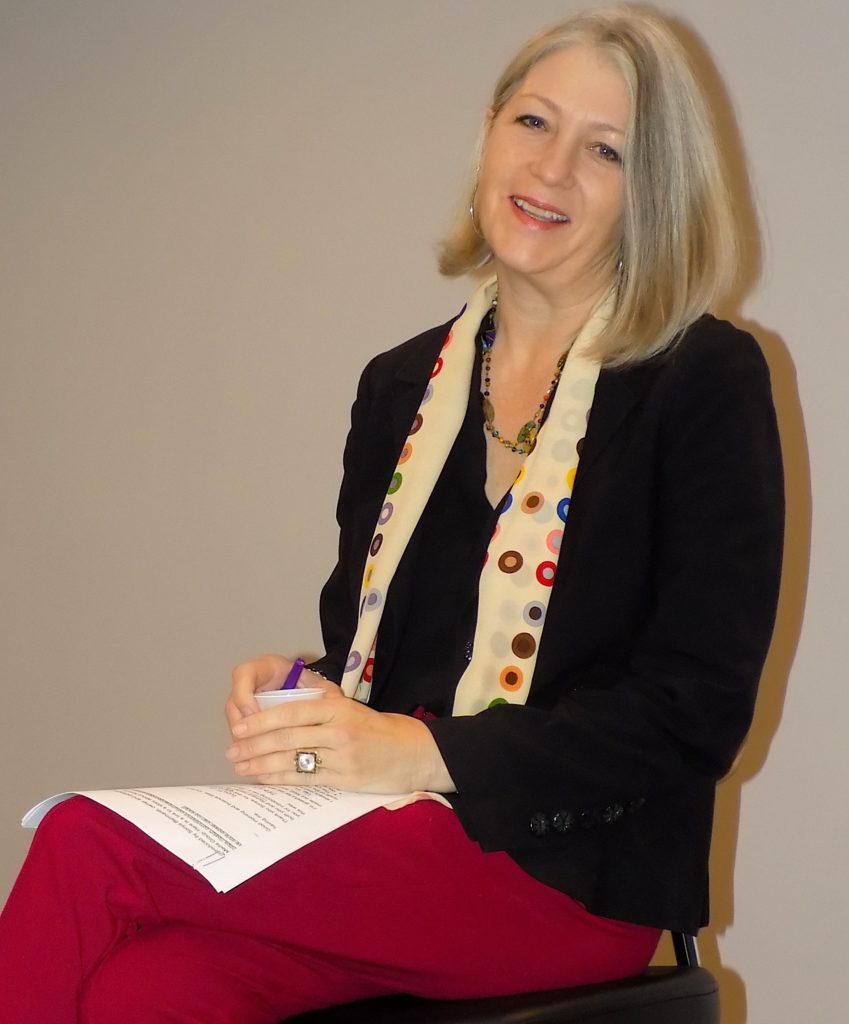Californian Takes Charge at American History Museum
By • September 25, 2019 0 1744

The morning after her museum gave songwriter Paul Simon a Great Americans medal, Dr. Anthea M. Hartig, Elizabeth MacMillan Director of the Smithsonian National Museum of American History, spoke at Georgetown Media Group’s Sept. 19 Cultural Leadership Breakfast, held at 1310 Kitchen & Bar by Jenn Crovato.
On the job for seven months, Hartig, former executive director and CEO of the California Historical Society in San Francisco, is the first woman to lead the museum. Earlier, she served as director of the western region of the National Trust for Historic Preservation.
Most of her career as a public historian has been spent in the West. A third-generation Southern Californian, from “a long line of pack rats,” she earned her bachelor’s degree at UCLA and her doctorate at the University of California, Riverside. Having researched and seen California’s continual remaking of its environment — including the plowing down of orange groves during her elementary school years — she commented: “Each generation was kind of really gung ho about erasing the last one.”
Coming east has meant such new and noteworthy experiences as selecting Kinky Boots from the Broadway show for the museum’s collection and dining with Chief Justice John Roberts at a meeting of the Smithsonian Board of Regents.
The chief justice asked her what her favorite artifact was (of the museum’s two million-plus), a question she now gets often. While her answer varies, a current object of fascination is Helen Keller’s Swiss “touch watch,” presented to the 12-year-old Keller by the director of the Volta Bureau, located in Georgetown.
The National Museum of American History has a budget of nearly $50 million, about a third of which is raised privately, she said. To give a sense of the museum’s scale, Hartig cited its three linear miles of archives and more than 100 storage spaces, one of which covers 100,000 square feet. Much of the collection, which dates to the 19th century, was originally catalogued and conserved inadequately (if at all).
Founded the year she was born, the museum — like her, she joked — “is showing its age.” And the Smithsonian as a whole has billions of dollars in deferred maintenance. Notwithstanding these challenges, Hartig said she felt “a profound sense of purpose.” She spoke inspiringly about the power of “touching the authentic,” and about history as a key that can unlock mysteries.
The museum is preparing a new seven-year strategic plan that will extend to early 2027, just after the nation celebrates its 250th birthday in 2026. The plan’s three main areas of focus will be accessibility, inclusivity and relevance. Digitizing more of the collection and determining how best to mediate the visitor experience through mobile devices are priorities, she said, lamenting that some school groups currently spend a total of 45 minutes in the museum.
Settling into a new city and a new role, Hartig acknowledged the support of the “sisterhood” of directors of D.C. cultural organizations, with women in charge at Arena Stage (Molly Smith), the Hirshhorn (Melissa Chiu), the Kennedy Center (Deborah Rutter), the National Air and Space Museum (Ellen Stofan), the National Gallery of Art (Kaywin Feldman), the National Museum of Women in the Arts (Susan Fisher Sterling), the National Portrait Gallery (Kim Sajet), the Phillips Collection (Dorothy Kosinski), the Smithsonian American Art Museum (Stephanie Stebich), the Smithsonian Arts & Industries Building (Rachel Goslins), the Washington Ballet (Julie Kent), Washington Performing Arts (Jenny Bilfield) and Woolly Mammoth (Maria Manuela Goyanes). As the first woman director of the National Museum of American History, “I reflect on the struggles of all of us,” she said.
A month after she arrived, Hartig opened “All Work, No Pay,” the first of three exhibitions connected with the Smithsonian American Women’s History Initiative. The other two, “Creating Icons: How We Remember Women’s Suffrage” and “Girlhood! (It’s Complicated),” will open next spring. On Hartig’s to-do list for 2021 are the completion of the museum’s 120,000-square-foot west wing renewal, with arts-and-culture exhibitions such as “Entertaining America,” and the opening of the Molina Family Latino Gallery, with bilingual displays. She noted that an exhibition about Latinos in baseball is in development.
Responding to a question about how the museum chooses subject matter, Hartig said she sometimes feels like Pixar’s Nemo, telling herself to “Just keep swimming.” But she is clearly energized rather than dismayed by history’s layered complexity. One of her guiding quotes comes from author James Baldwin, who said in a 1963 talk: “American history is longer, larger, more various, more beautiful and more terrible than anything anyone has ever said about it.”

